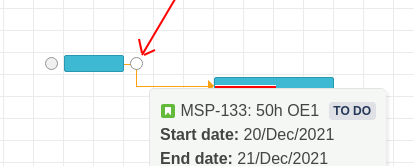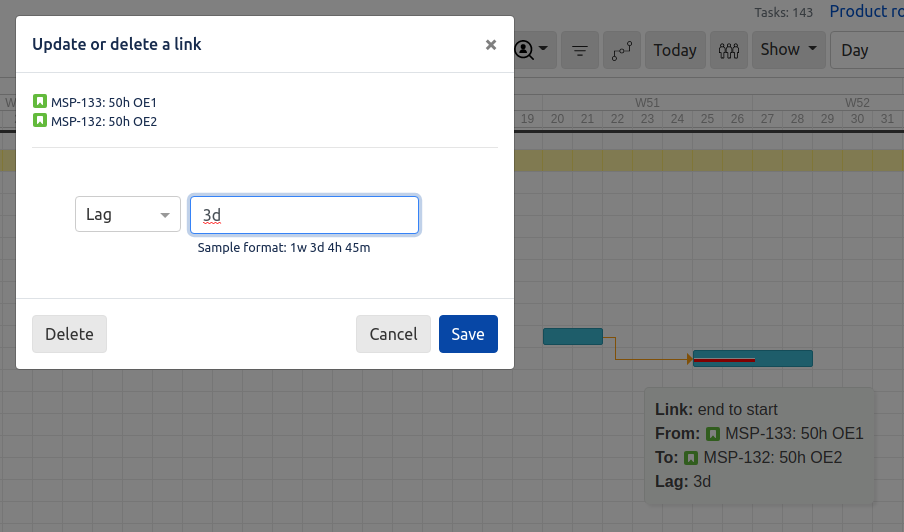double click the link
right click a link, and select Edit from the context menu

double click the round task connector

Gantt Suite supports dependencies with lead and lag.
Lag refers to the amount of time that is added between a predecessor task and its successor. Lag is a delay.
Lead is the amount of time by which a successor task can be advanced with regard to its predecessor. So lead is a kind of negative lag.
It is possible to set a delay (gap) between tasks by moving successor task after the predecessor via drag & drop, or by editing task start date. But autoscheduling might eventually move successor right after the end of predecessor. Additionally, critical path visualization isn’t working correctly if there is a gap between tasks that is not set up as a lag of the dependency.
There are few ways to set lead or lag for a dependency, once you hover over it:
double click the link
right click a link, and select Edit from the context menu

double click the round task connector

This will open the dependency edit dialog.

Set the desired lead or lag and click Save.
The lag depends on a resource assigned to an end task and is measured based on the resource working time. Meaning, if working time of the resource assigned to the end task has changed this will affect the dependency lag and tasks scheduling overall.
The lag depends on a resource assigned to an end task and is measured based on the resource working time. Meaning, if working time of the resource assigned to the end task has changed this will affect the dependency lag and tasks scheduling overall.